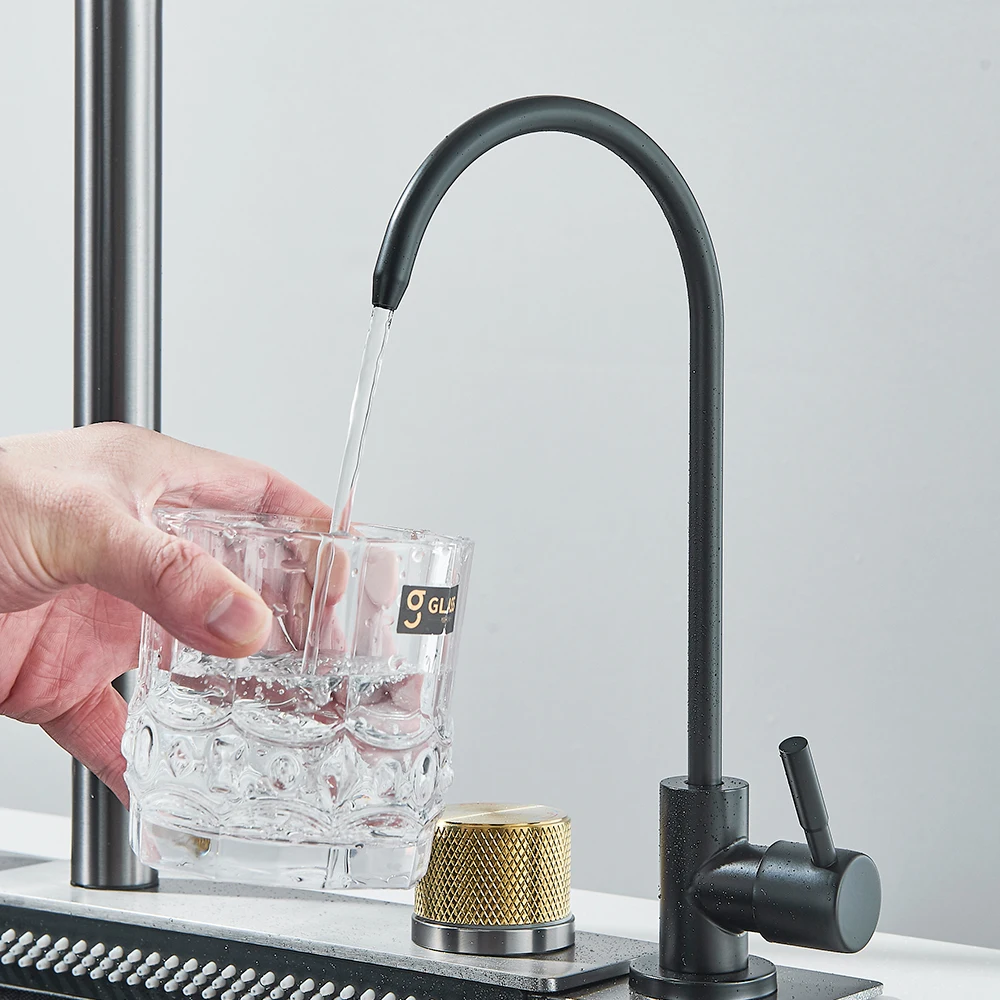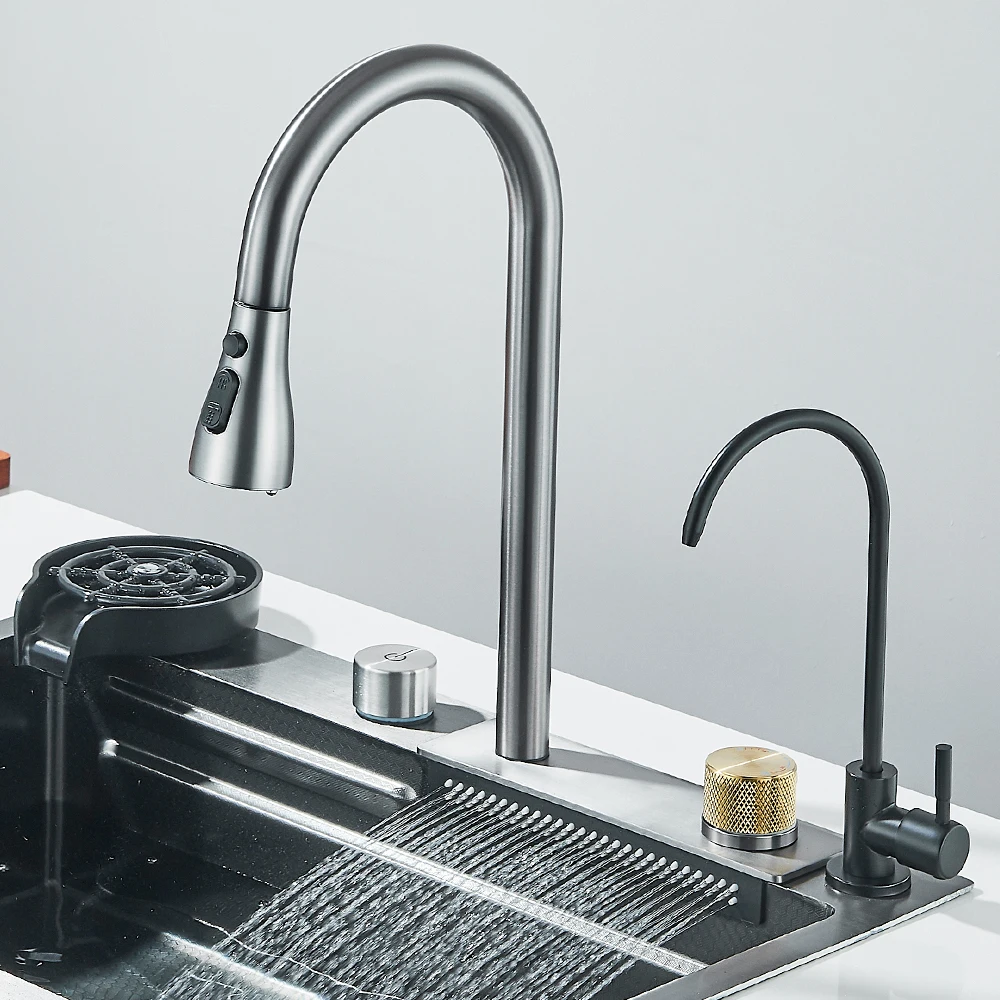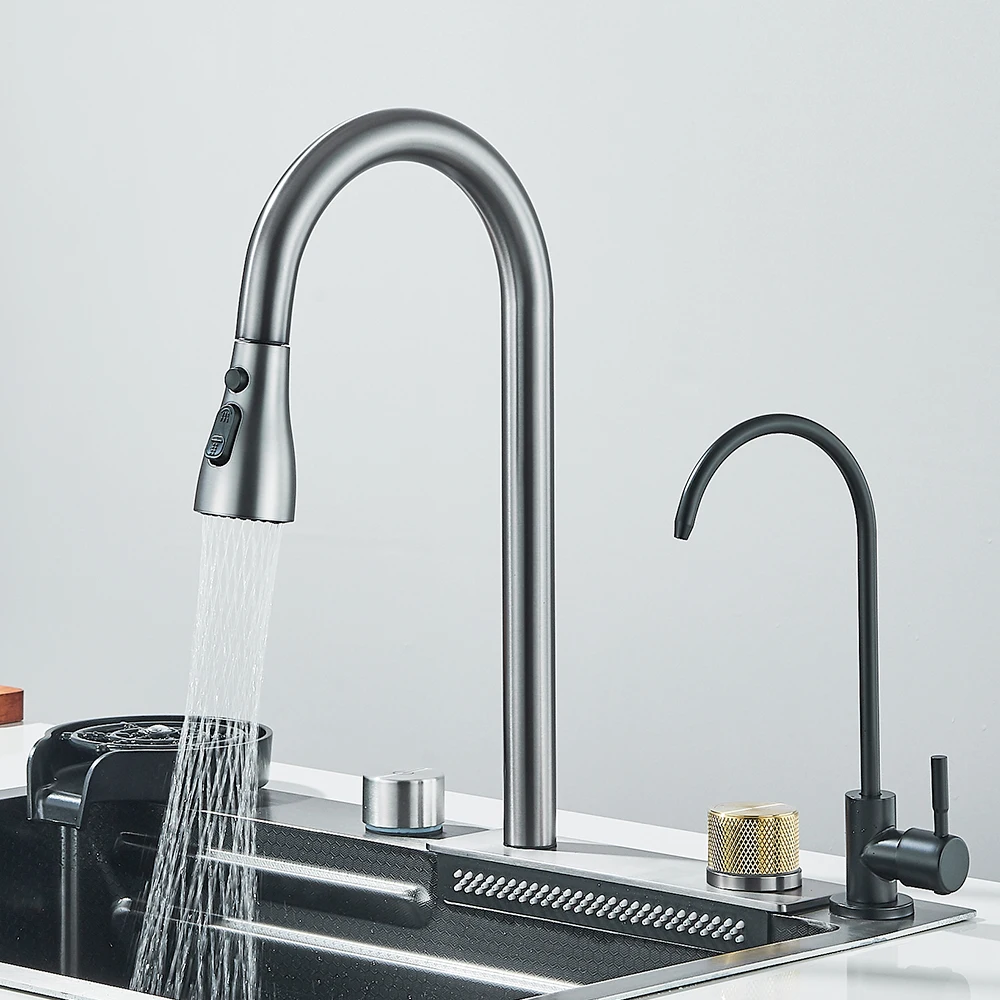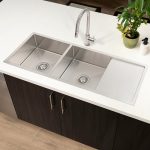Understanding Kitchen Sink Sizes
The Variety of Kitchen Sink Sizes
When it comes to kitchen sinks, it’s important to understand that they do not come in a one-size-fits-all model. Kitchen sinks come in a range of sizes to accommodate different needs, preferences, and kitchen layouts. The size of a kitchen sink can significantly affect both its functionality and the overall aesthetic of your kitchen. Common sink sizes include single-basin sinks, double-basin sinks, and even triple-basin sinks, each designed to meet different culinary needs and space constraints.
Standard sizes for kitchen sinks typically range from 22 inches to 33 inches in width, with depths usually varying between 8 inches to 10 inches. However, there are also smaller or larger sinks available for specific applications or custom installations. For instance, a compact sink might be ideal for a smaller kitchen or a secondary prep sink, while a larger sink could be perfect for a spacious kitchen or a sink intended for heavy-duty use.
Factors Influencing Sink Size
Several factors influence the appropriate size of a kitchen sink, including the size of the kitchen, the style of cabinetry, and personal preferences. In smaller kitchens, a compact sink might be more practical to maximize counter space. Conversely, in larger kitchens, a more substantial sink can provide additional functionality and aesthetic appeal. Additionally, the type of kitchen cabinetry can affect the choice of sink size. For example, undermount sinks require precise measurements to ensure they fit correctly with the countertop and cabinet structure.

Types of Kitchen Sinks and Their Dimensions
Single-Basin Sinks
Single-basin sinks are known for their simplicity and large, uninterrupted space. They typically range in width from 22 inches to 30 inches, with depths varying from 8 inches to 10 inches. This type of sink is ideal for those who need ample space for washing large pots and pans or for a streamlined, minimalist kitchen design.
The lack of dividers in single-basin sinks allows for easy maneuverability of larger items and simplifies cleanup. However, they may not be as practical for households that often require simultaneous washing of dishes and food prep, which can make the choice of a sink with multiple basins more appealing.
Double-Basin Sinks
Double-basin sinks offer a versatile design, with two separate basins typically ranging in width from 22 inches to 33 inches. Each basin usually measures between 12 inches to 15 inches in width, allowing for separate tasks like washing and rinsing. These sinks can be particularly useful for multitasking and managing different kitchen chores simultaneously.
Double-basin sinks are often favored in busy kitchens where space and functionality are priorities. The ability to separate tasks can enhance efficiency, though it’s essential to ensure that the overall size of the sink still fits comfortably within the kitchen layout and cabinetry.
Triple-Basin Sinks
For those who require even more functionality, triple-basin sinks provide three separate compartments. These sinks are less common but offer additional versatility, with each basin typically ranging in width from 15 inches to 20 inches. The extra basin can be used for various purposes such as food prep, washing, and rinsing, making it ideal for larger households or kitchens that frequently host large gatherings.
The installation of a triple-basin sink requires careful planning to ensure it fits well within the kitchen’s layout and cabinetry. Additionally, while they offer enhanced functionality, the increased size of a triple-basin sink might not always be suitable for smaller kitchens.
Measuring for the Perfect Fit
Accurate Measurements for Sink Installation
Proper measurement is crucial when selecting a kitchen sink to ensure a perfect fit within your existing cabinetry. To begin, measure the width, depth, and height of the sink area, taking into account any countertop overhang or cabinet structure that may affect installation. Accurate measurements prevent issues such as incorrect fit or the need for additional modifications to the cabinetry.
Additionally, consider the configuration of the sink cutout in your countertop. The dimensions of this cutout must match the dimensions of the sink to ensure a seamless installation. Double-checking measurements and consulting with a professional installer can help avoid common pitfalls and ensure that the sink fits perfectly.

Cabinet Dimensions and Sink Compatibility
In addition to measuring the sink area, it is essential to check the dimensions of the cabinet that will house the sink. The width and depth of the cabinet must accommodate the sink, with some extra space needed for plumbing and other installations. Be sure to account for any support structures or reinforcements within the cabinet that could affect the sink’s fit.
For undermount sinks, the countertop’s thickness and support structure also play a role in ensuring a proper fit. If you’re installing a new sink into existing cabinetry, be prepared to make adjustments if necessary to ensure compatibility and functionality.
Sink Materials and Size Considerations
Choosing the Right Material for Your Sink
The material of a kitchen sink can also impact the overall size and functionality. Common sink materials include stainless steel, porcelain, granite composite, and cast iron. Each material offers different benefits and may influence the ideal sink size for your needs.
Stainless steel sinks are durable and versatile, often available in a range of sizes and configurations. Porcelain sinks provide a classic look and can be customized to various sizes, but they may require more care to avoid chipping. Granite composite and cast iron sinks are heavy and may require additional support, affecting the choice of size and installation process.
Balancing Size with Material Durability
When choosing a sink material, balance the size of the sink with its durability and maintenance requirements. Larger sinks made from materials like granite composite may require additional structural support, while smaller sinks in materials like stainless steel may offer more flexibility in installation. Consider how the material will impact the sink’s performance and longevity in relation to its size.
Sink Installation Considerations
DIY vs. Professional Installation
Deciding whether to install a kitchen sink yourself or hire a professional depends on several factors, including your experience, the complexity of the installation, and the size of the sink. While a DIY installation can save money, it requires accurate measurements and careful handling to avoid errors.
Professional installers can ensure that the sink is correctly measured, fitted, and sealed, reducing the risk of issues such as leaks or improper fit. They also have the expertise to handle any modifications or adjustments required for unique sink sizes or configurations.
Addressing Potential Challenges
During installation, several challenges may arise, especially with larger or custom-sized sinks. Common issues include fitting the sink within existing cabinetry, ensuring proper drainage, and accommodating any changes to plumbing. Addressing these challenges requires careful planning and sometimes additional modifications to the cabinetry or countertop.

Exploring Different Sink Configurations
Farmhouse Sinks
Farmhouse sinks, also known as apron-front sinks, are a popular choice for their distinctive and charming appearance. These sinks are characterized by their exposed front panel and deep basins, which can accommodate large pots and pans easily. Farmhouse sinks typically range from 30 inches to 36 inches in width, with depths often exceeding 10 inches. The larger size and unique design of farmhouse sinks make them ideal for spacious kitchens and traditional or rustic kitchen styles.
When considering a farmhouse sink, it’s important to ensure that your cabinetry is compatible with the sink’s dimensions. The front panel of these sinks extends beyond the cabinetry, which may require modifications to the cabinet structure or countertop. Additionally, due to their depth, farmhouse sinks may necessitate adjustments to the plumbing and drainage systems.
Conclusion
In summary, not all kitchen sinks come in the same size, and selecting the right size involves considering various factors such as kitchen layout, sink type, and material. Understanding the different sizes and configurations available, accurately measuring the installation area, and balancing size with material durability are all crucial steps in choosing the perfect sink for your kitchen. Whether you opt for a single-basin, double-basin, or triple-basin sink, careful planning and consideration will ensure that your new sink meets your needs and enhances the functionality and aesthetics of your kitchen.

